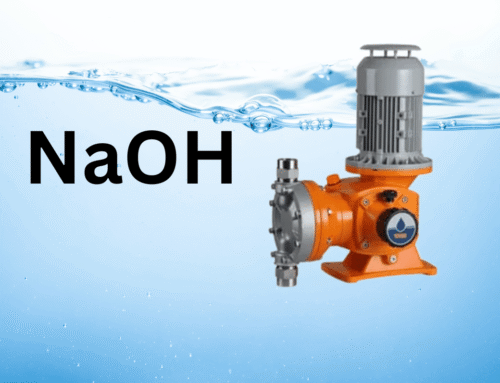A motor-driven mechanical diaphragm pump is a type of positive displacement pump that uses the controlled motion of a flexible diaphragm to move liquid. How does a motor-driven mechanical diaphragm work? It is powered by an electric motor, which converts rotational motion into linear motion to create alternating suction and discharge strokes. Known for its precision, leak-free operation, and durability, this pump is widely used in industries that require accurate dosing and continuous fluid handling.
The Basic Working Principle
The operation of a motor-driven mechanical diaphragm pump revolves around the conversion of rotary motion from a motor into reciprocating motion that flexes the diaphragm. Inside the pump, a crankshaft or eccentric cam connects to a connecting rod that is directly linked to the diaphragm.
When the motor starts, the crankshaft rotates, causing the connecting rod to push and pull the diaphragm back and forth. This simple motion creates two alternating phases: suction and discharge.
- During the suction stroke, the diaphragm moves backward, expanding the pump chamber and reducing internal pressure. This creates a vacuum that opens the inlet check valve, allowing liquid to flow into the chamber.
- During the discharge stroke, the diaphragm moves forward, compressing the fluid. The increased pressure closes the inlet valve and opens the outlet check valve, forcing the liquid out of the chamber through the discharge port.
Because the diaphragm flexes rather than slides or rotates, the pumped fluid never contacts any mechanical parts. This ensures a completely sealed system, eliminating the risk of leaks or contamination.
Precision and Flow Control
One of the defining features of a motor-driven mechanical diaphragm pump is its ability to provide accurate, repeatable dosing. The flow rate can be controlled in two ways: by adjusting the stroke length of the diaphragm or by varying the motor speed.
Electronic control systems, including variable frequency drives (VFDs), allow fine-tuning of flow rates without mechanical adjustment. This makes the pump ideal for chemical dosing, proportional injection, and continuous process control.
Each stroke of the diaphragm moves a fixed volume of liquid, so performance remains consistent even when system pressure fluctuates. This stability is why the pump is often used in precision-critical operations such as water treatment, chemical processing, and laboratory metering.
Design Advantages
Motor-driven mechanical diaphragm pumps combine the mechanical reliability of motor systems with the safety of a sealed pumping chamber. Their leak-free design makes them suitable for hazardous or corrosive fluids. Materials like PTFE, PVDF, and stainless steel (SS316) are commonly used to ensure chemical compatibility and long service life.
They are also self-priming and capable of running continuously with minimal maintenance. Since the diaphragm isolates the pumped fluid from moving parts, there are no shaft seals or packing to wear out. This reduces downtime and operating costs compared to traditional piston or plunger pumps.
Applications in Industry
These pumps are widely used in industries where precision and reliability are non-negotiable. In water and wastewater treatment, they dose chlorine, acids, and coagulants with exact accuracy. In the oil and gas sector, they inject additives and corrosion inhibitors into pipelines under pressure. They are also used in agriculture for fertilizer dosing, and in pharmaceutical or food processing where contamination-free operation is essential.
So, how does a motor-driven mechanical diaphragm work? A motor-driven mechanical diaphragm pump works by using a motor’s rotary motion to drive a diaphragm in a back-and-forth cycle, generating suction and discharge to move liquid. Its combination of precision, durability, and leak-proof design makes it one of the most reliable pumps for industrial dosing and chemical metering. Engineered for long-term performance, it delivers accurate, continuous, and safe fluid transfer across a wide range of demanding applications.






Leave A Comment